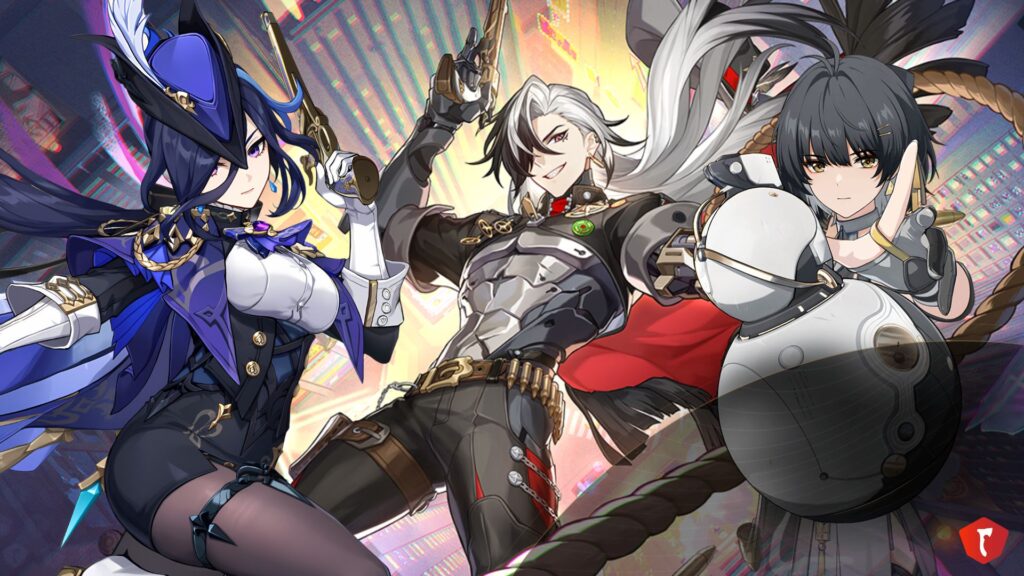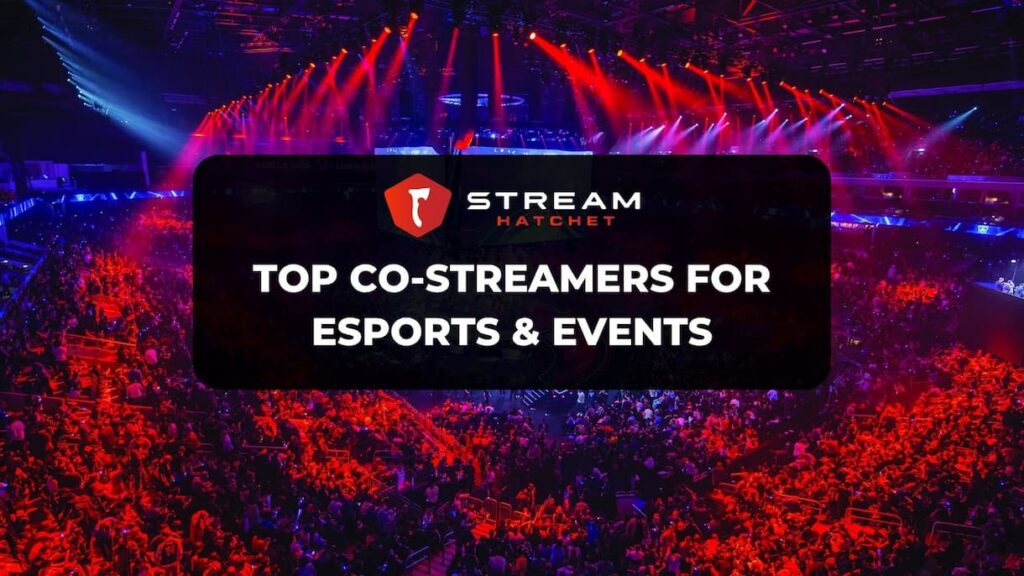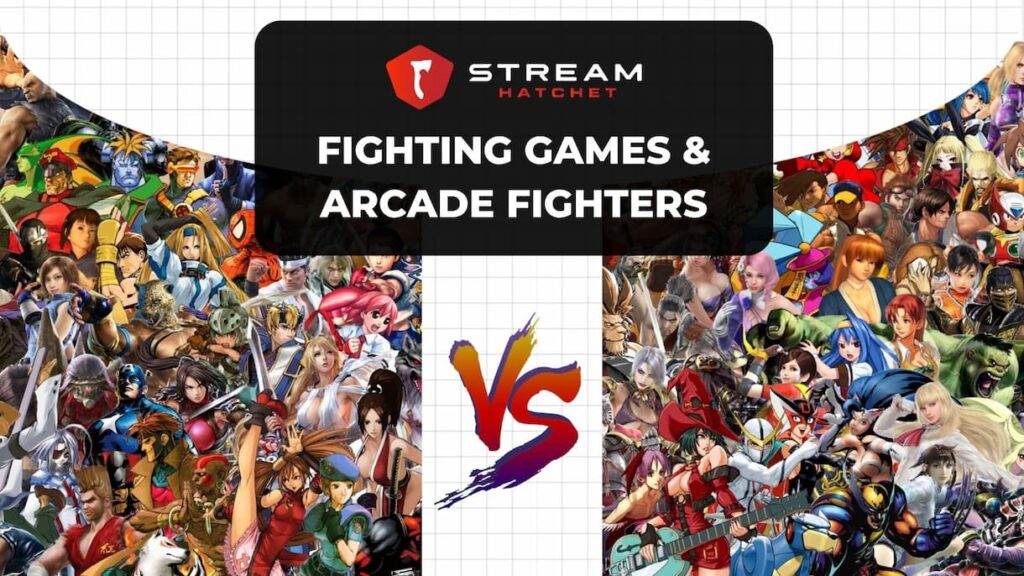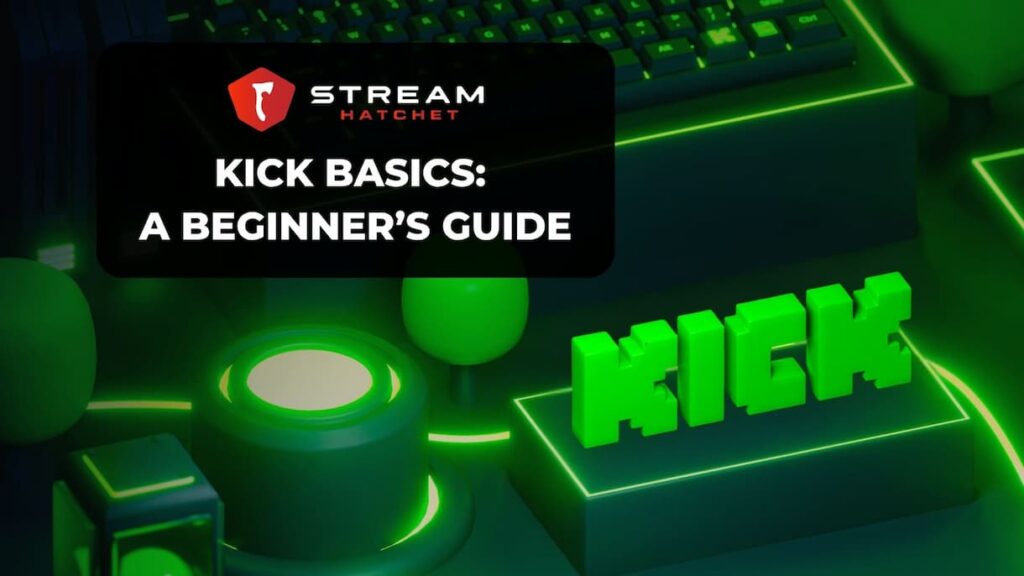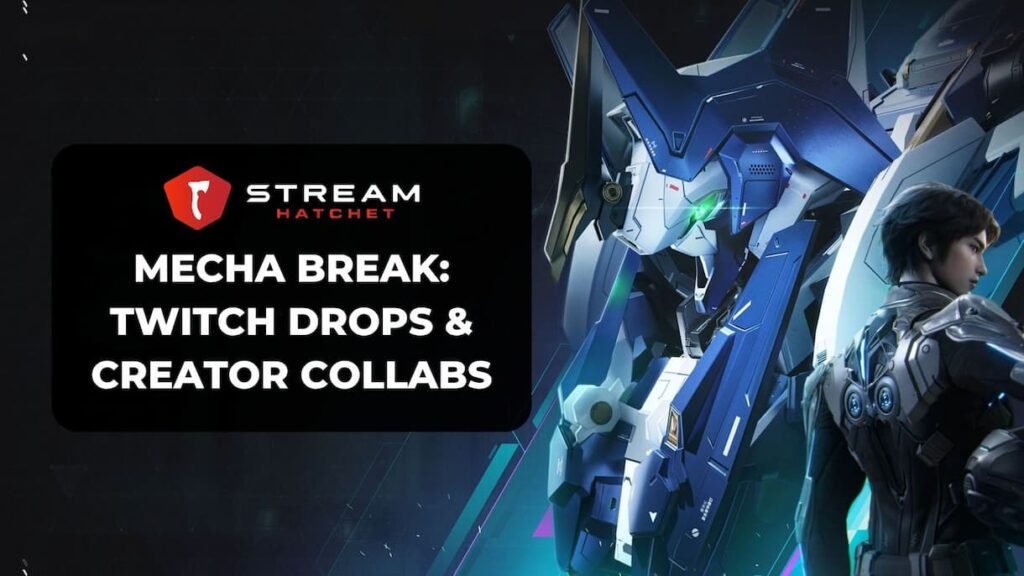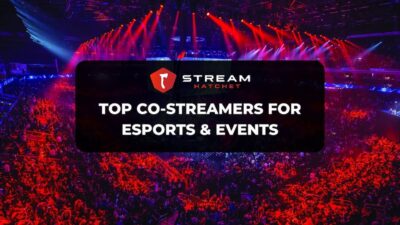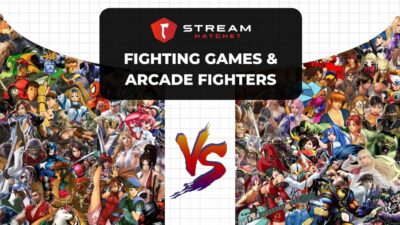The recent release of Wuthering Waves caused a stir among gamers: How were Kuro Games able to make a game so incredibly similar to miHoYo’s Genshin Impact? Similar to the Palworld/Pokémon controversy in January this year, pundits were quick to judge the new game due to its aesthetic similarities and near-identical gacha system. But Chinese publishers have released a slew of new gacha games in recent years, so there must be some crucial factor that ties together both Wuthering Waves and Genshin Impact’s audiences.
Given the outstanding success of Wuthering Waves upon release, this issue deserves further analysis to determine whether the same viewers are really engaging with both games. If the audiences overlap, it remains to be seen whether this shared audience is justified by similarities in gameplay, aesthetic, or story between the two games.
Wuthering Waves Entices the Audiences of Genshin Impact and Honkai: Star Rail
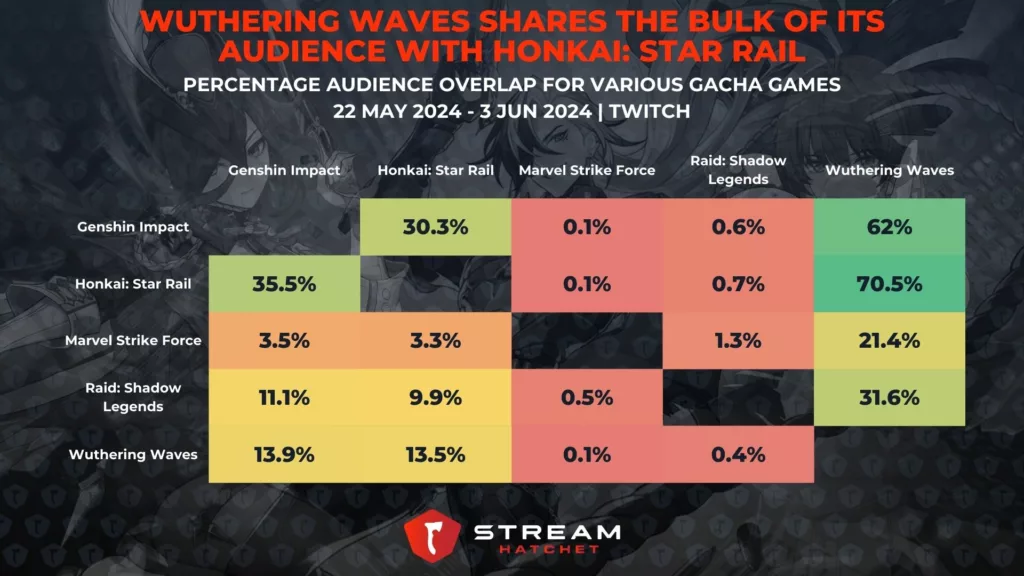
Comparing the audiences for the big three gacha games reveals a substantial overlap: 70.5% of people who watch Honkai: Star Rail also watch Wuthering Waves, and similarly 62% of people who watch Genshin Impact watch Wuthering Waves. These numbers drop dramatically for non-anime-styled gacha games such as Raid: Shadow Legends and Marvel Strike Force which share only 31.6% and 21.4% of their audience with Wuthering Waves, respectively. This overlapping audience is backed up by viewership numbers for gacha games over the month of May, with Genshin Impact seeing a massive 25.6% drop in hours watched presumably as a result of Wuthering Waves’ release.
Are Wuthering Waves and Genshin Impact really so similar beyond their anime aesthetics and “waifu” fan service characters, however? Even among gacha systems, the two games have a comically identical set of resources that players use to “pull” new characters. In fact, the way these systems are balanced for monetization with premium currency and drop rates is virtually the same. Although combat is faster and more intricate in Wuthering Waves and the world is slightly more mature with its post-apocalyptic trappings, one could be forgiven for seeing the two games as highly similar – certainly enough for an interested fan of Genshin Impact to give the game a watch on live streaming.
Where this gets interesting, however, is when comparing Wuthering Waves to miHoYo’s other big gacha title: Honkai: Star Rail. As stated before, the two games share 70.5% of their audience. But the two games are vastly different: Wuthering Waves is an Action-RPG set in a post-apocalyptic fantasy world with free-roaming open-world exploration, while Honkai: Star Rail is a turn-based RPG set in a sci-fi world with far more limited mobility. This shows that art style has an overwhelming effect on perception when encouraging players to try a new game, far more so than gameplay.
As with Palworld before it, Wuthering Waves has benefited from the comparison to a prior title. The word-of-mouth promotion for the game enticed Genshin Impact’s players and viewers to try it out as a breath of fresh air. Developers and publishers might take a leaf out of Kuro Games’ book by positioning their games as being similar to other well-recognized titles to stir up online discourse.
To keep up to date with the latest popular genres on live streaming, follow Stream Hatchet:
